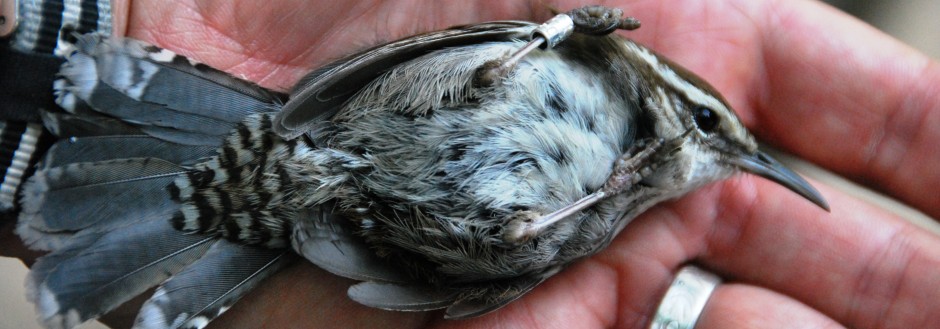Chestnut-backed Chickadee and RFID Monitoring
Undergraduate research project by Sarah Chalmers (2015-2016) – Poster
Radio frequency identification (RFID) technology serves as an affordable tool for the study of passerine behaviour. To determine the daily feeding dynamics of locally common free-living birds, Sarah built bird feeders with RFID readers and banded Chestnut-backed Chickadees (Poecile rufescens) with passive integrated transponder (PIT) tags.
Over the course of 27 days, the reader logged over 8,245 unique visits by eleven tagged individuals (n = 11). From this data, she found that tagged chickadees generally began visiting the RFID feeder shortly after sunrise and the mean visitation rate steadily increased throughout the morning, peaking between 11:00 and 15:00.
Visitation rate dropped sharply approximately one hour before sunset. Total daily visits to the feeder decreased significantly as mean daily temperature increased. Similarly, total daily visits generally decreased with increasing total daily precipitation, although this relationship was not significant.
These data suggest that the birds’ daily energy reserves were being met before sunset and may have been maintained throughout the morning by relying on cached seeds from the previous day.




